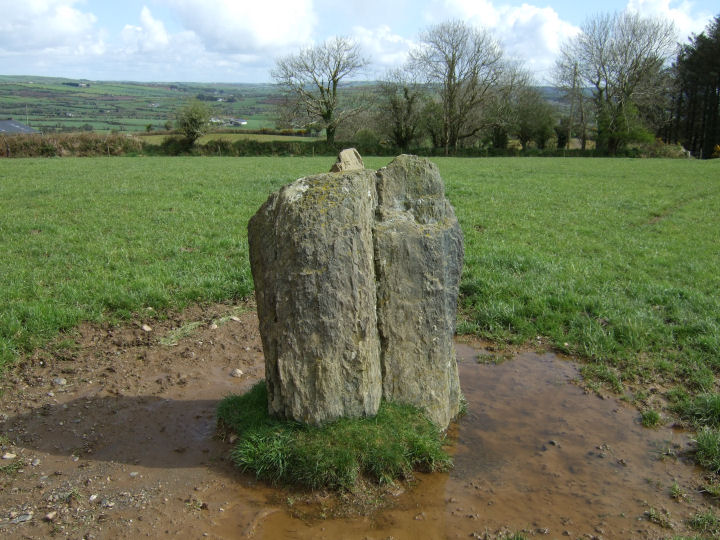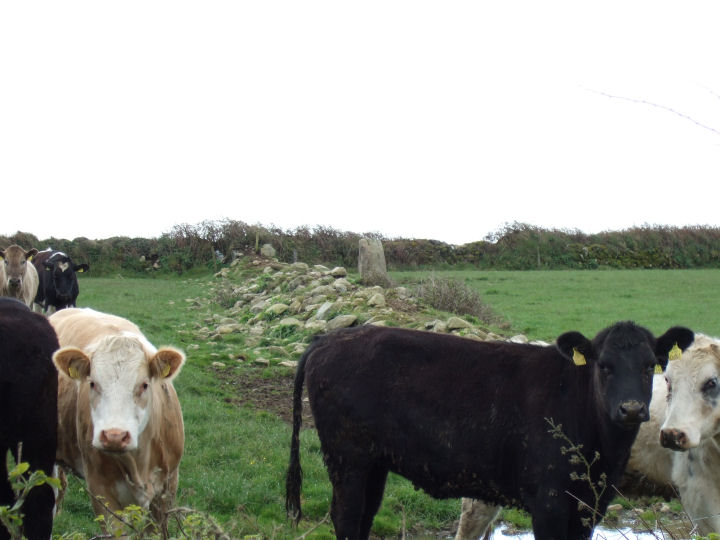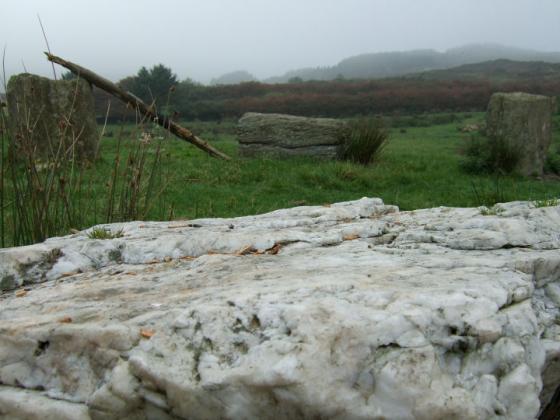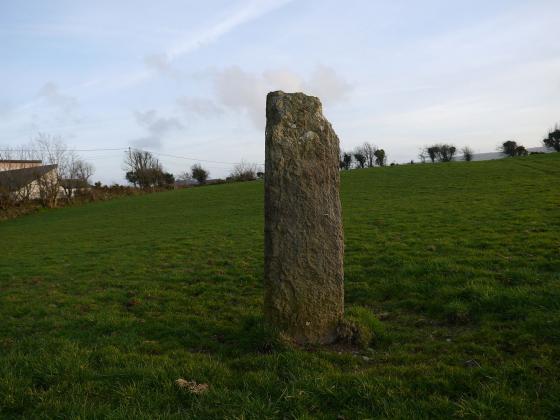
Looking south from the field boundary.

Looking south from the field boundary.

Looking back up from the drop to the southwest.

Looking SW along the pair.

Looking NE along the pair.

The northern side of the NE stone.

The southern side of the SW stone.

The standing stone to the southwest is not in line with the pair, but does sit nicely in the broadest profile of the notch on the southwesterly stone, if you stand behind it. Probably coincidental.

The stone that stands a couple of fields to the southwest.
A probable anomalous stone pair, recorded as two separate standing-stones in the Inventory. The mutation is in the placement of the NE stone; 2m long*, which appears to be set in a deliberately recumbent position. The stone to the SW; 1.3m tall*, stands in line with the long axis of the former and is L-shaped in cross-section. Another standing-stone, beyond the field boundary and south of the axis of the pair, is not listed in the Inventory and may be modern.
Views are extensive to the S, E and N but are blocked to the W by a short rise towards the summit of a low hill, a similar blind to the other Argideen valley pairs at Knockawaddra E and Sarue and the row at Knockatlowig.
*Archaeological Inventory of Cork, 1992; No.276, 49; No.513, 67.
Access is through the farmyard, by the road to the east of the site and permission to visit may be obtained at the adjacent farmhouse.











































































